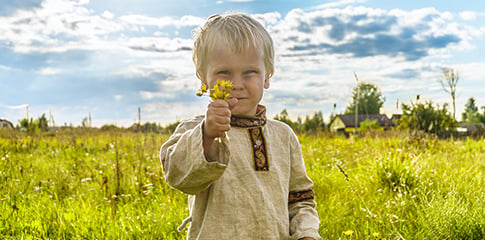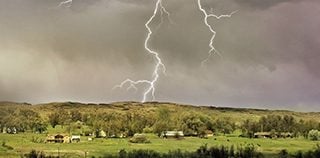Few things take the joy out of peak gardening season like that sudden sneeze or sniffle to let you know your allergies are acting up again. But don’t let your plant allergies keep you from tending to your garden.
All that allergy-friendly gardening requires is some preparation, the right plants…and determined spirit!
Plant allergies & triggers
As pollen season peaks in the UK, you might be hesitant to give your garden a makeover, and we don’t blame you. There are dozens of culprits out there that can cause your hay fever to suddenly spring up. The top types of pollen you’re likely to encounter consist of:
- Tree pollen – Anytime you have the sniffs and snorts, the prime suspect is usually a tree (or trees) nearby. Many species have hay fever flowers, but birch pollen, oak pollen and pine pollen are some of the biggest offenders during spring and summer.
- Grass pollen – In close second is grass pollen, which peaks during summer and can be hard to avoid in the countryside.
- Weed pollen – This may be one to be aware of if haven’t weeded your garden for a while. Common culprits that trigger hay fever include ragweed, nettle, and mugwort.
Don’t let your allergies beat you. Before beautifying your garden, find out which pollen type triggers your hay fever with our detailed Allergy Quiz.
Now let’s explore how to keep hay fever at bay when you’re out gardening.
Swap grass for artificial alternatives
Replacing real grass with artificial alternatives is one way to limit your exposure to grass pollen in the garden.
While planting natural grass and plants can come with the risk of causing hay fever symptoms, artificial grass is allergen-free. The grass doesn’t release any pollen that can trigger your hay fever, so you can still enjoy the bright greens in your garden without any repercussions.
If you’re sensitive to pollen and other atmospheric allergens, then artificial grass might be right for you. However, it can come with its fair share of responsibility, especially during summer. Neglecting to clean your artificial grass and plants can cause dust to gather on the leaves, and this could also aggravate your allergies.
Wind also makes pollen travel, so replacing your grass with artificial grass doesn’t necessarily protect you from the natural grass in your neighbour’s garden. That’s why it’s always important to be prepared when gardening by…
Wearing protective gear
Before you even dream about planting those sunflower seedlings, you’ll need to suit up to prevent any hay fever triggers.
First, pop on a face mask to avoid breathing in any pollen in the air. Then get yourself some firm gardening gloves for handling the plants. Remember to wear a long-sleeved shirt to stop any pollen from coming into contact with your skin, too. Then, wash the clothes you’ve been gardening in as soon as you get inside to avoid any pollen getting in your home.
Be prepped with Allergy Comfort tissues up your sleeve, just in case some pollen gets through your protective gear. Use it to quickly blow out pollen from your nose or wipe it from your eyes.
Once you’re done with gardening for the day, have a good long shower to remove any residual allergens.
Plant sterile plants
Planting sterile plants is the next best thing if artificial grass is a tad over budget. Many sterile plants are double-flowered, which can help you avoid hay fever triggers if you’re sensitive to pollen.
The genius behind double-flowered plants is that they’ve been bred so that their reproductive parts are turned into extra petals – which is why they don’t release pollen.
You can also use sterile ornamental grasses and other options like bamboo and shrub.
Aside from sterile plants, you could also plant low pollen flowers in your garden, which are less likely to trigger your allergies. This could include:
- Daffodils
- Tulips
- Snapdragons
- Petunias
- Irises
- Clematis armandii
- Whitebeam
Avoid certain activities at peak times
Pollen count tends to be higher during certain times of the day, especially morning hours, late evenings, or in spells of high wind. It’s wise to avoid mowing the lawn, pruning the weeds, and basking in the sun next to your garden plants during these hours.
Steer clear of these times with our Kleenex Pollen Tracker to determine the exact pollen levels in your area and help avoid hay fever triggers.
Keep your gardening tools clean
Once you’re done tending to your garden, always give your gardening tools a quick clean. Some pollen might stick to your tools and trigger your allergies later on. Clean them to limit the amount of pollen you come into contact with.
Now you know all the gardening hacks to avoid plant allergies, it’s time to get out in the garden. But before picking up your trowel and rake, check the pollen levels in your area with Your Pollen Pal to plan ahead for the next five days.













